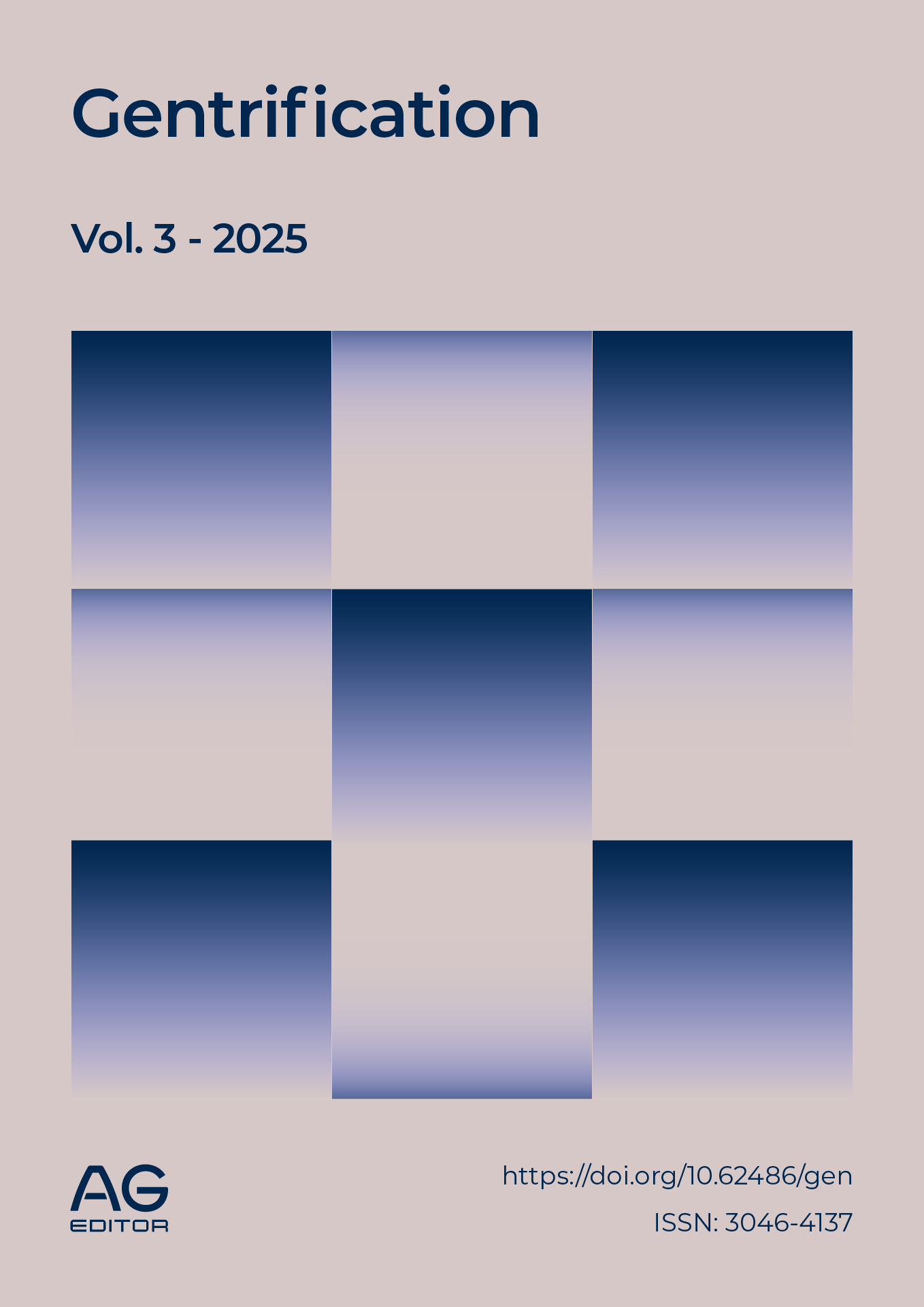Smart city concept: Integrating technology into municipal governance
DOI:
https://doi.org/10.62486/gen202585Keywords:
economic growth, public administration, smart technologies, sustainable development, urbanizationAbstract
The article highlights the basics of the Smart City concept. The author considers general theoretical approaches to its understanding and analyzes the constituent elements of this phenomenon. The author systematizes statistical data on Smart Cities and theoretical foundations. The analysis of these factors made it possible to identify the advantages and disadvantages of Smart Cities. In addition to identifying them, the author of the article proposed specific steps to overcome or minimize their impact on the safety and life of citizens. The article also focuses on specific examples of European cities and analytical data on the advantages of certain smart projects. The work emphasizes that Ukrainian initiatives within the framework of the Smart Cities concept are promising, but fragmentized. The novelty lies in citing specific initiatives taken as an example of implementation in European cities with statistically proven effectiveness and their application in Ukraine. The author also takes into account those elements that are already functioning and those that need to be expanded. In addition, attention is focused on those initiatives that are not yet fully functioning in Ukraine. The author paid special attention to the importance of implementing the Smart Cities Concept in the post-war reconstruction of the country
References
Adenekan, O. A., Ezeigweneme, C., & Chukwurah, E. G. (2024). The evolution of smart cities: Integrating technology, governance, and sustainable development. International Journal of Applied Research in Social Sciences, 6(5), 891-902. https://doi.org/10.51594/ijarss.v6i5.1131
Agencia Andaluza de la Energía (2024). Andalusian energy statistics. Retrieved from: https://www.agenciaandaluzadelaenergia.es/en/informacion-energetica/andalusian-energy-statistics
Alda, M. (2023). Smart Cities – Spain. Retrieved from https://www.statista.com/outlook/tmo/internet-of-things/smart-cities/spain
Altamirano, J. (2024). Top 5: How Are European Cities with the Most Charging Points Progressing? Retrieved from https://mobilityportal.eu/top-5-european-cities-charging-points/
Amine, R. (2024). Smart Cities: Development and Benefits. In: Belaïd, F., Arora, A. (Eds). Smart Cities. Studies in Energy, Resource and Environmental Economics (pp. 45-53). Berlin: Springer. https://doi.org/10.1007/978-3-031-35664-3_4
Andalitska, I. (2024). Cyberattack on Ukrainian registries: MP believes bribery of officials may have been involved. Retrieved from https://www.unian.ua/society/kiberataka-na-ukrajinski-reyestri-zlam-mig-statisya-cherez-pidkup-sluzhbovciv-12861855.html#goog_rewarded
Angelidou, M. (2014). Smart city policies: A spatial approach. Cities, 41, S3-S11. https://doi.org/10.1016/j.cities.2014.06.007
Anthopoulos, L. G. (2017). Understanding smart cities: A tool for smart government or an industrial trick? (1st ed.). Berlin: Springer. https://doi.org/10.1007/978-3-319-57015-0
Bachanek, K. H., Tundys, B., Wiśniewski, T., Puzio, E., & Maroušková, A. (2021). Intelligent Street Lighting in a Smart City Concepts — A Direction to Energy Saving in Cities: An Overview and Case Study. Energies, 14(11), 3018. https://doi.org/10.3390/en14113018
Balyukh, N. (2024). More than 2.7 million users: Kyiv Digital app turns 3 years old. Retrieved from https://suspilne.media/kyiv/719396-ponad-27-mln-koristuvaciv-zastosunku-kiiv-cifrovij-vipovnuetsa-3-roki/
Benevolo, C., Dameri, R. P., & D’Auria, B. (2016). Smart mobility in smart city. In T. Torre, A. Braccini, & R. Spinelli (Eds.), Lecture Notes in Information Systems and Organisation: Vol. 11, Empowering organizations. Berlin: Springer. https://doi.org/10.1007/978-3-319-23784-8_2
Braun, T., Fung, B. C. M., Iqubal, F., Shah, B. (2018). Security and privacy challenges in smart cities. Sustainable Cities and Society, 39, 499-507. https://doi.org/10.1016/j.scs.2018.02.039
Bulatova, O. V., Reznikova, N. V., Ivashchenko, O. A. (2023). Digital divide or digital inequality? New dimensions of global asymmetries of socio-economic development and international trade in the conditions of technoglobalism. Economics, 25, 45-57. https://doi.org/10.34079/2226-2822-2023-13-25-45-57
Deloitte. (2022). Ninth annual global survey of multinationals. Retrieved from https://www.deloitte.com/cy/en/services/tax/research/beps-global-survey.html
Diorditsa, I.V., & Zhuravel, Y.V. (2023). Innovativeness of the Smart city concept and legal mechanisms for ensuring its cybersecurity in the context of reforming territorial communities in Ukraine. Actual problems of national jurisprudence, 1, 99-105. https://doi.org/10.32782/39221437
Dziundziuk, K. V. (2023). Experience of Implementing the Concept of a Smart City in Developing Countries. Public management and administration, 7, https://doi.org/10.54929/2786-5746-2023-7-02-01
European Commission (2018) Smart cities. Retrieved from https://commission.europa.eu/eu-regional-and-urban-development/topics/cities-and-urban-development/city-initiatives/smart-cities_en
European Commission (2023). Report on the state of the Digital Decade 2023. Retrieved from https://eur-lex.europa.eu/legal-content/EN/TXT/HTML/?uri=CELEX:52023DC0570
European Court of Auditors (2023). Smart cities Tangible solutions, but fragmentation challenges their wider adoption. Retrieved from https://www.eca.europa.eu/ECAPublications/SR-2023-24/SR-2023-24_EN.pdf
European Union (2021). Future of Europe 2021. Retrieved from https://europa.eu/eurobarometer/surveys/detail/2554
Garcia, D., Puig, V., & Quevedo, J. (2020). Prognosis of Water Quality Sensors Using Advanced Data Analytics: Application to the Barcelona Drinking Water Network. Sensors, 20(5), 1342. https://doi.org/10.3390/s20051342
Gramchuk, M., Nikitenko, V. (2023). Present Trends and Prospects of Smart City Development. Humanities Studies, 14(91), 33-41.
Hajduk, S. (2016). The Concept of a Smart City in Urban Management. Business Management and Education, 14(1), 34-49. http://doi.org/10.3846/bme.2016.319
Heineke, K., Kloss, B., Von Rüden, M. A., Möller, T., & Wiemuth, C. (2023). Shared mobility: Sustainable cities, shared destinies. Retrieved from https://www.mckinsey.com/industries/automotive-and-assembly/our-insights/shared-mobility-sustainable-cities-shared-destinies
International Telecommunication Union (2022). Internet more affordable and widespread, but world’s poorest still shut off from online opportunities. Retrieved from https://www.itu.int/en/mediacentre/Pages/PR-2022-11-30-Facts-Figures-2022.aspx
Joss, S., Cook, M., Dayot, Y. (2017). Smart Cities: Towards a New Citizenship Regime? A Discourse Analysis of the British Smart City Standard. Journal of Urban Technology, 24(4), 29-49. https://doi.org/10.1080/10630732.2017.1336027
Kotkin, J. (2009). The world’s smartest cities. Retrieved from https://www.forbes.com/2009/12/03/infrastructure-economy-urban-opinions-columnists-smart-cities-09-joel-kotkin.html
Krasyliuk, V. F. (2024). The concepts of smart cities and smart community: content and features of implementation. Current Policy Issues, 73, 54-61. http://doi.org/10.32782/app.v73.2024.8
Lea, R. (2017). Smart cities: An overview of the technology trends driving smart cities. IEEE Advancing technology for Humanity, 3, 1-16.
Macedo, E., Teixeira, J., Sampaio, C., Silva, N., Coelho, M. C., Glinos, M., & Bandeira, J. M. (2021). Real-time information systems for public transport: user perspective. Transportation Research Procedia, 52(3), 732-739. http://doi.org/10.1016/j.trpro.2021.01.088
Manoharan, G., Durai, S., Rajesh, G. A., Razak, A., Rao, C. B. S., Ashtikar, S. P. (2023) A study on the perceptions of officials on their duties and responsibilities at various levels of the organizational structure in order to accomplish artificial intelligence-based smart city implementation. Artificial Intelligence and Machine Learning in Smart City Planning, 1, 1-10. http://doi.org/10.1016/B978-0-323-99503-0.00007-7
Mohanty, S. P., Choppali, U., Kougianos, E. (2016). Everything You Wanted to Know About Smart Cities. IEEE Consumer Electronics Magazine, 5(3), 60-70. http://doi.org/10.1109/MCE.2016.2556879
Naim, N. H., Adnan, M. S. G., Zannat, K. E., Dewan, A. (2021). Assessing the performance of public transport services in a developing country: A case study using data envelopment analysis. Growth and Change, 53(1), 377-409. http://doi.org/10.1111/grow.12588
OECD Urban Studies (2023). Smart City Data Governance Challenges and the Way Forward. Retrieved from https://www.oecd.org/content/dam/oecd/en/publications/reports/2023/10/smart-city-data-governance_fc19e878/e57ce301-en.pdf
Orejon-Sanchez, R. D., Crespo-Garcis, D., Andres-Diaz, J. R., Gaso-Calderon, A. (2022). Smart cities' development in Spain: A comparison of technical and social indicators with reference to European cities. Sustainable Cities and Society, 81(1), 103828. https://doi.org/10.1016/j.scs.2022.103828
Paroutis, S., Bennett, M. Heracleous, L. (2014). A Strategic View on Smart City Technology: The Case of IBM Smarter Cities during a Recession. Technological Forecasting and Social Change, 89, 262-272. http://doi.org/10.1016/j.techfore.2013.08.041
Pereli, D. D. (2023). The Concept of a Smart City in the Conditions of the Information Society Development. Public Management and Administration in Ukraine, 33, 136-140. http://doi.org/10.32782/pma2663-5240-2023.33.25
Roblek, V. (2019). The smart city of Vienna. Smart city emergence. Elsevier, 105-127. https://doi.org/10.1016/B978-0-12-816169-2.00005-5
Secureworks. (2023). Boardroom cybersecurity report on cybercrime. Retrieved from https://www.secureworks.com/resources/rp-boardroom-cybersecurity-report-2023
Silva, B. N., Khan, M., & Han, K. (2018). Toward sustainable smart cities: A review of trends, architectures, components, and open challenges in smart cities. Sustainable Cities and Society, 38, 697-713. https://doi.org/10.1016/j.scs.2018.01.053
University of Barcelona (2024). The University of Barcelona maximizes measures to reduce the use of water and starts an awareness campaign. Retrieved from https://web.ub.edu/en/web/actualitat/w/estalvi-aigua
Woetzel, L., Remes, G., Boland, B., Sinha, S., Strube, G., Means, J., Law, J., Cadena, A., & Von der Tann, V. (2018). Smart cities: Digital solutions for a more livable future. Retrieved from https://www.mckinsey.com/capabilities/operations/our-insights/smart-cities-digital-solutions-for-a-more-livable-future
World Economic Forum. (2022). The Global Competitiveness Index. Retrieved from https://www.weforum.org/about/the-global-competitiveness-index-gci-5-0/
Yin, C. T., Xiong, Z., Chen, H., Wang, J. Y., Cooper, D., David, B. (2015). A literature survey on smart cities. Science China Information Sciences, 58(10), 1–18. https://doi.org/10.1007/s11432-015-5397-4.
Downloads
Published
Issue
Section
License
Copyright (c) 2025 Olha Yatsun (Author)

This work is licensed under a Creative Commons Attribution 4.0 International License.
The article is distributed under the Creative Commons Attribution 4.0 License. Unless otherwise stated, associated published material is distributed under the same licence.






